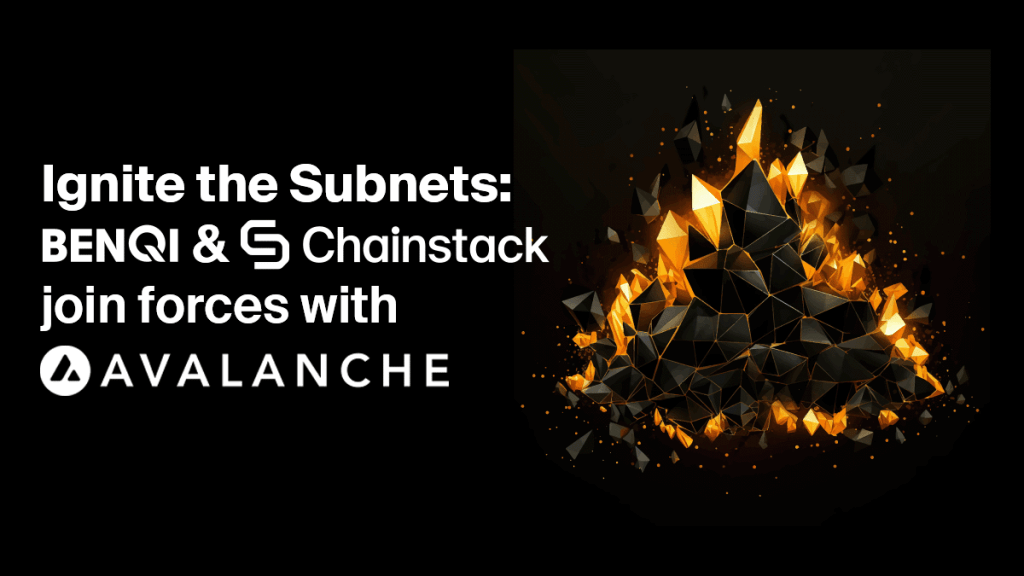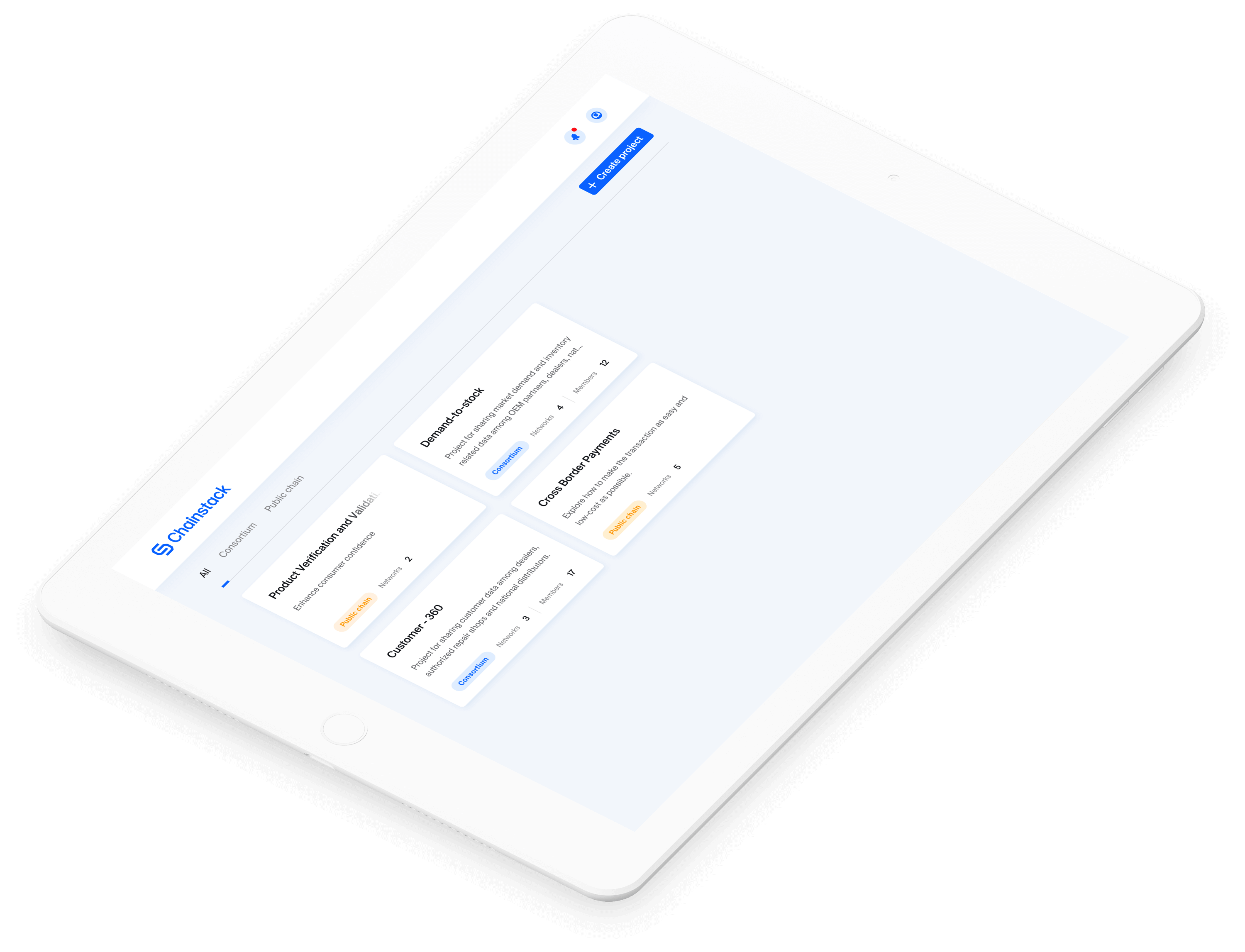Ignite the Subnets: Benqi and Chainstack join forces with Avalanche

For a long time, the potential and promise of blockchain technology have been stifled by significant barriers to entry, especially for solo Web3 developers. Against this backdrop, we are thrilled to announce our partnership with Benqi in a joint effort to make Avalanche Subnets that much more accessible.
With the launch of Benqi’s Ignite program, we’re witnessing a major shift in the Avalanche ecosystem, and we’re thrilled to be a part of it. Together, we are paving the way for accelerated appchain development and innovation across Web3.
Build your own Avalanche Subnets on Chainstack with Benqi
Avalanche Subnets are a pivotal innovation in the world of Web3 appchains. These Subnets stand out within the Avalanche ecosystem for offering the ability to create a custom blockchain network, according to your specifications. Leveraging this dynamic feature on Chainstack, you gain the ability to dictate the operational parameters of your blockchain, including the choice of virtual machines, validation protocols, and reward mechanisms for each Subnet.
A Subnet, represents a group of Avalanche validators tasked with reaching consensus across one or more blockchain networks. Unique to each blockchain, Subnets can oversee the validation of multiple blockchain networks. Notably, the Avalanche Primary Network, which is considered a distinguished Subnet, operates three principal blockchains: the Platform Chain (P-Chain), the Contract Chain (C-Chain), and the Exchange Chain (X-Chain).
Avalanche Subnets advantages
- Autonomous networks: Subnets allow for the creation of networks with tailored execution logic, fee configurations, and security measures, ensuring that performance remains stable regardless of the activities in other Subnets.
- Built-in interoperability: Thanks to Avalanche Warp Messaging, Subnets are inherently interoperable, facilitating effortless communication and transactions between different Subnets.
- Tailored for specific applications: Subnets enable validators to adhere to particular hardware specifications, ensuring the network runs at peak efficiency.
- Enhanced compliance and privacy measures: With Subnets, you can implement specific regulations and privacy guidelines, including geographic, licensing, and KYC/AML considerations, alongside the provision for private Subnets accessible only to authorized validators.
- Choice in validation participation: Within this diverse network, validators have the freedom to select the Subnets they wish to validate, optimizing their computational resources.
And speaking of Avalanche Subnets validators, this is where Chainstack and Benqi’s Ignite program come into play. On one hand, we at Chainstack, provide you with options to deploy your Avalanche Subnets validators at a click of a button, while the Benqi Ignite program serves to provide you with the staking collateral needed to push your Subnet live. Let’s explore the Ignite program in detail.
What is the Benqi Ignite program?
The Ignite program is a game-changer for Avalanche Subnets, radically simplifying the deployment of both Subnets and their validators. The Ignite program provides an affordable and accessible alternative to the traditional approach that requires substantial financial investment to complete.
And considering these are outside the reach of many,, we’re excited to support this initiative and help lower the barriers to entry for aspiring Web3 developers and builders wanting to harness the power of cutting-edge L2 appchain technology.
Through our combined efforts and the introduction of staking rentals for validation services, we’re opening the door for many more to start their own Subnets, democratizing the process, while nurturing the Avalanche ecosystem.
This model drastically reduces the capital required to launch an Avalanche validator. By handling the validators on Chainstack, Benqi gives clients the option to rent AVAX, spreading staking costs over time and significantly lowering the entry barrier for Avalanche Subnets.

How Benqi’s Ignite program works
To ensure developers get the most out of the Ignite program, it has been designed with two different validation options in mind—Pay As You Go (PAYG) and Stake. Here’s a closer look at each:
- Pay As You Go (PAYG):
- No minimum stake required.
- Offers a rental model to lower capital requirements for launching an Avalanche validator, increasing accessibility.
- Allows Web3 developers to pay in USDC, AVAX, or QI; requires inputting a NodeID and setting a staking duration.
- Ignite provides all necessary AVAX for validator launch.
- Stake:
- Requires a minimum stake plus an additional amount in QI.
- Operates without any fees for usage.
- Enables Web3 developers to earn staking rewards in proportion to their AVAX stake.
- Allows claiming of AVAX and QI stakes plus all network rewards, including delegation fees, at the end of the staking period.
Both options aim to make deploying Avalanche Subnets more flexible and affordable, fostering an inclusive environment for developers and organizations. Through the collaboration with Benqi and Avalanche, these staking options are designed to empower a broader community within the Avalanche ecosystem.
Bringing it all together
We anticipate that our collective efforts together with Benqi and Avalanche will foster a more dynamic Avalanche ecosystem. This refreshing start marks an important chapter in our journey toward a more accessible and inclusive Appchain development.
Through our partnership, we also trust that these advancements will have wider implications in the blockchain industry. As we craft an environment conducive to growth and innovation, we’re hopeful it will inspire further commitment across Web3.
Power-boost your project on Chainstack
- Discover how you can save thousands in infra costs every month with our unbeatable pricing on the most complete Web3 development platform.
- Input your workload and see how affordable Chainstack is compared to other RPC providers.
- Connect to Ethereum, Solana, BNB Smart Chain, Polygon, Arbitrum, Base, Optimism, Avalanche, TON, Ronin, zkSync Era, Starknet, Scroll, Aptos, Fantom, Cronos, Gnosis Chain, Klaytn, Moonbeam, Celo, Aurora, Oasis Sapphire, Polygon zkEVM, Bitcoin, Tezos and Harmony mainnet or testnets through an interface designed to help you get the job done.
- To learn more about Chainstack, visit our Developer Portal or join our Discord server and Telegram group.
- Are you in need of testnet tokens? Request some from our faucets. Multi-chain faucet, Sepolia faucet, Holesky faucet, BNB faucet, zkSync faucet, Scroll faucet.
Have you already explored what you can achieve with Chainstack? Get started for free today.




























